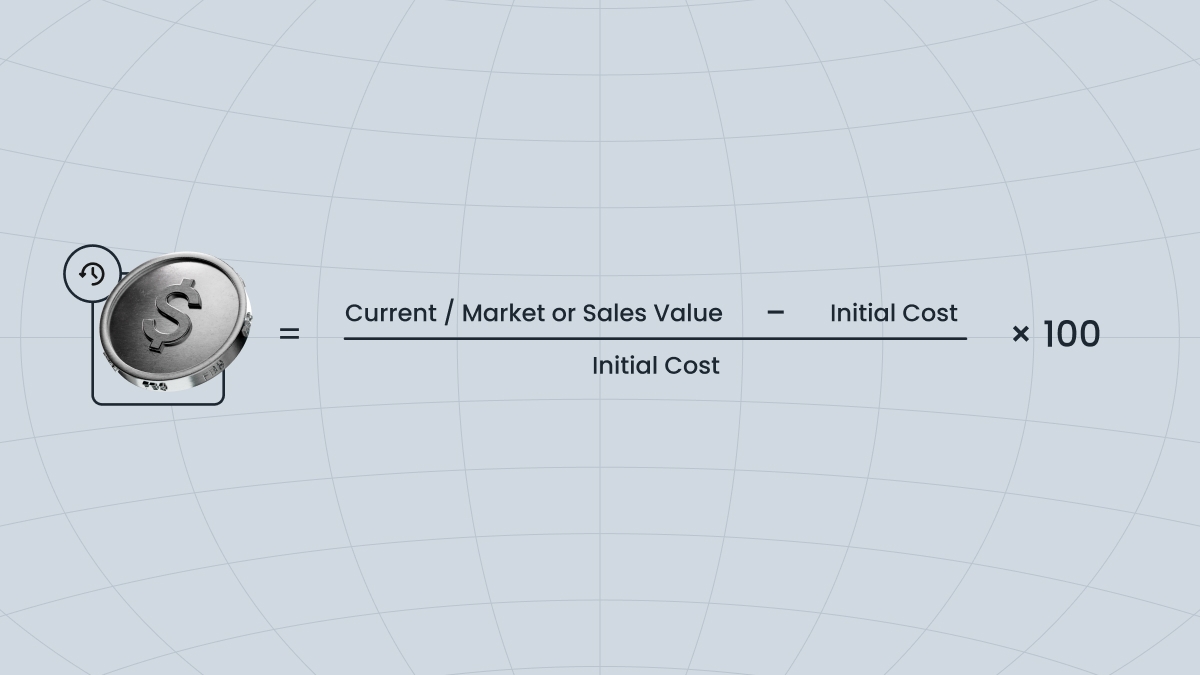If your RoR is a positive number, you’ve made a profit. If it’s negative, you’ve taken a loss. No matter what you invest in - be it stocks, bonds, crypto, gold, real estate, or art - you’ll always have a rate of return. It helps you see if your money is working for you.
The RoR is easy to calculate, and the sheer amount of information investors and businesses can gather from it is the main reason why RoR is so relied upon. Its calculations come with many benefits, but they also have some limitations that you should be aware of.
Key components of the RoR
Net profit - the amount remaining after all expenses are deducted.
Investment cost - everything spent on developing your business.
The RoR formulais calculated as follows:(Current Value - Initial Cost / Initial Cost) x 100

Any gains made during the holding period of the investment must be included in the formula. For example, if a share costs $10 and its current price is $15 with a dividend of $1 paid during the period, the dividend should be included in the ROR formula. In this case, it would be calculated like this:
(($15 + $1 – $10) / $10) x 100 = 60%
Example of a rate of return (RoR)
Let’s say you bought a classic car that you plan to resell.
You bought it for $10 000 and paid in full. A few years later, you sold it for $13 000 after all costs like repairs or listing fees.
To calculate the rate of return:
($13 000 − $10 000) ÷ $10 000 × 100 = 30%
Your RoR is 30%, which means you earned 30% more than you originally spent.
Now let’s flip the situation.
Say the market didn’t go your way, and you ended up selling the car for only $7500.
The calculation would then be:
($7500 − $10 000) ÷ $10 000 × 100 = -25%
In this case, you would have lost 25% of your initial investment.
Example of an RoR with stocks:
The way we calculate rate of return (RoR) for stocks is pretty much the same, except that dividends are also factored in.
Let’s say you bought Coca-Cola Company (KO) stock for $60 and kept it for 5 years.Over the course of this time, you got $10 in dividends. Then, you sold the stock for $80. That means you made $20 by selling ($80 − $60) plus $10 in dividends, so your total gain is $30.
To find your RoR:$30 ÷ $60 = 0.50, or 50%

